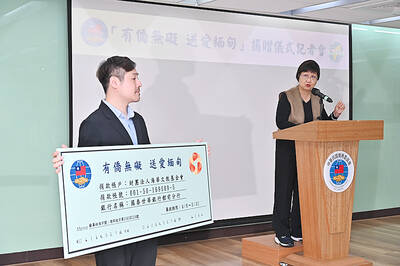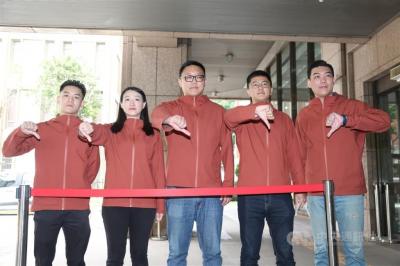The nation enters typhoon season today and the Central Weather Bureau (CWB) says that three to five typhoons or tropical storms are likely to hit this year.
The typhoon season begins in July and ends in September. This year, however, four tropical storms have formed in the northwest Pacific Ocean since May, with Tropical Storm Linfa hitting the outlying islands of Taiwan.
Daniel Wu (吳德榮), director of the CWB’s forecast center, said that about 24 to 27 typhoons could form in the northwest Pacific Ocean this year, but only three to five of them would likely pose a threat to Taiwan.
Data from the past 30 years showed that the average number of typhoons in the northwest Pacific Ocean between July and September is 26.6. And on average, about three typhoons hit Taiwan, the bureau said.
In the past five years, however, the average number of typhoons in the same area during these three months was 24.2, with around four hitting Taiwan.
Wu added that sea temperature of the central Pacific would affect where typhoons or tropical storms form.
“The sea temperature has risen slightly,” he said. “This will potentially cause typhoons or tropical storms to form around Guam. In that case, typhoons are more likely to develop into major typhoons because they tend to stay longer over the sea and can absorb more water vapor.”
“So far, however, we’ve also seen tropical storms form around the South China Sea and the Philippines,” he said.
Wu also said meteorologists from the UK and Hong Kong estimated 27 typhoons would form in the northwest Pacific.
The bureau also presented figures on rainfall during the Plum Rain season, which lasts from May to June.
Accumulated rain in these two months normally accounts for one-third of annual rainfall.
Wu said the data showed that the amount of rainfall in May was less than average, but normal last month.
As of Sunday, the average accumulated rainfall at the bureau’s 13 observation stations nationwide was 279.6mm, or 227mm less than average.
This made this year’s Plum Rain season the fifth driest on record, following dry spells in 1980, 1954, 1971 and 2004.

Taiwan is stepping up plans to create self-sufficient supply chains for combat drones and increase foreign orders from the US to counter China’s numerical superiority, a defense official said on Saturday. Commenting on condition of anonymity, the official said the nation’s armed forces are in agreement with US Admiral Samuel Paparo’s assessment that Taiwan’s military must be prepared to turn the nation’s waters into a “hellscape” for the Chinese People’s Liberation Army (PLA). Paparo, the commander of the US Indo-Pacific Command, reiterated the concept during a Congressional hearing in Washington on Wednesday. He first coined the term in a security conference last

A magnitude 4.3 earthquake struck eastern Taiwan's Hualien County at 8:31am today, according to the Central Weather Administration (CWA). The epicenter of the temblor was located in Hualien County, about 70.3 kilometers south southwest of Hualien County Hall, at a depth of 23.2km, according to the administration. There were no immediate reports of damage resulting from the quake. The earthquake's intensity, which gauges the actual effect of a temblor, was highest in Taitung County, where it measured 3 on Taiwan's 7-tier intensity scale. The quake also measured an intensity of 2 in Hualien and Nantou counties, the CWA said.

The Overseas Community Affairs Council (OCAC) yesterday announced a fundraising campaign to support survivors of the magnitude 7.7 earthquake that struck Myanmar on March 28, with two prayer events scheduled in Taipei and Taichung later this week. “While initial rescue operations have concluded [in Myanmar], many survivors are now facing increasingly difficult living conditions,” OCAC Minister Hsu Chia-ching (徐佳青) told a news conference in Taipei. The fundraising campaign, which runs through May 31, is focused on supporting the reconstruction of damaged overseas compatriot schools, assisting students from Myanmar in Taiwan, and providing essential items, such as drinking water, food and medical supplies,

Prosecutors today declined to say who was questioned regarding alleged forgery on petitions to recall Democratic Progressive Party (DPP) legislators, after Chinese-language media earlier reported that members of the Chinese Nationalist Party (KMT) Youth League were brought in for questioning. The Ministry of Justice Investigation Bureau confirmed that two people had been questioned, but did not disclose any further information about the ongoing investigation. KMT Youth League members Lee Hsiao-liang (李孝亮) and Liu Szu-yin (劉思吟) — who are leading the effort to recall DPP caucus chief executive Rosalia Wu (吳思瑤) and Legislator Wu Pei-yi (吳沛憶) — both posted on Facebook saying: “I